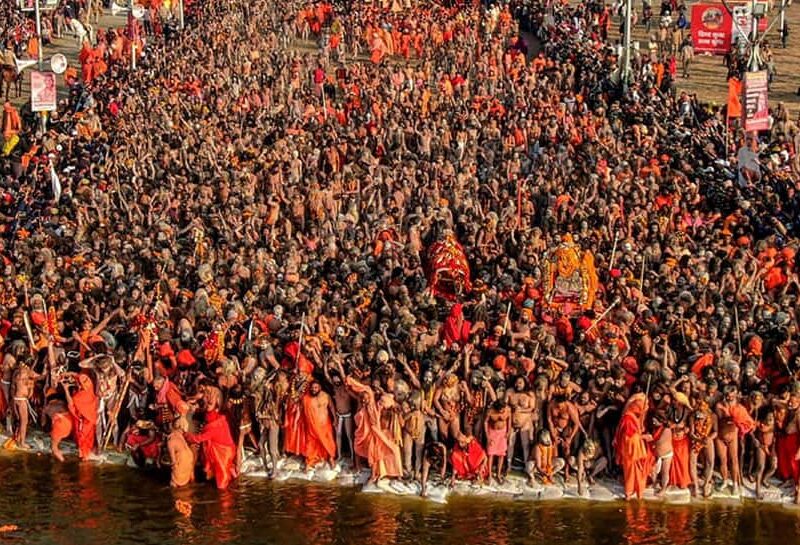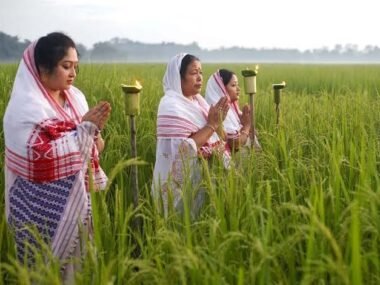Introduction
Kumbh Mela is not just India’s largest religious gathering but the world’s. Rooted deeply in Hindu mythology and faith, this grand festival draws millions of devotees from every corner of the globe. Held at four pilgrimage sites—Prayagraj, Haridwar, Nashik, and Ujjain—on a rotational basis, Kumbh Mela offers a unique confluence of spirituality, devotion, and cultural vibrance. The event’s allure lies in the belief that taking a holy dip in the sacred rivers during specific celestial alignments absolves one’s sins and paves the way to salvation.
This centuries-old tradition, celebrated at monumental intervals (Maha Kumbh every 12 years, Ardh Kumbh every 6 years, and the annual Magh Mela), transforms the host cities into temporary tented cities, bustling with activities. From serene early morning prayers by the Ganges to mesmerizing cultural performances in the evenings, Kumbh Mela encapsulates the essence of India’s rich spiritual heritage.
History and Significance of Kumbh Mela
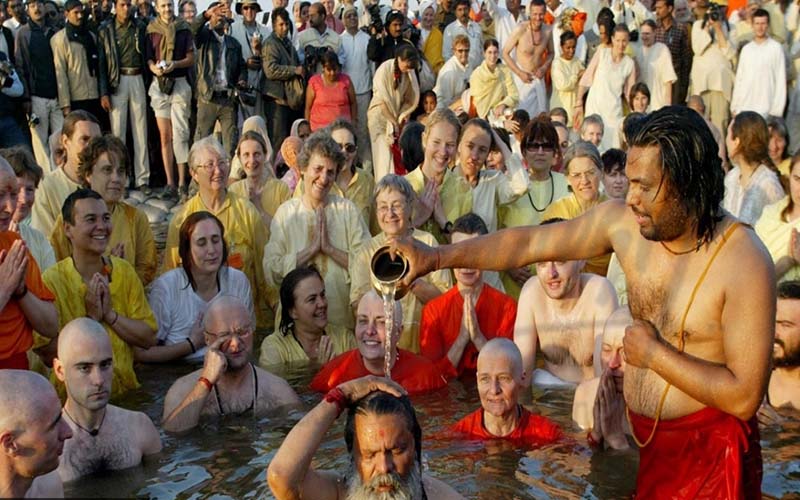
Mythological Origins
The legendary origins of the Kumbh Mela trace back to the tale of the Samudra Manthan or the churning of the ocean of milk. According to Hindu mythology, this cosmic event was an effort by the Devas (gods) and the Asuras (demons) to obtain the Amrit, the nectar of immortality, which lay hidden in the ocean depths. After mounting the Mandara Mountain on the back of divine serpent Vasuki and using it as a churning rod, the ocean yielded the nectar. However, a fierce battle ensued between the Devas and the Asuras to claim the prized Amrit. Legend has it that during this battle, a few drops of the nectar spilled over four locations: Prayagraj, Haridwar, Ujjain, and Nashik. These places witness the Kumbh Mela as it is believed these drops sanctified the rivers with the elixir of life, making them auspicious sites for spiritual purification.
Historical Evolution
The history of Kumbh Mela is a fascinating journey from its mythological past to its present form as a massive religious gathering. Originally, the concept of Kumbh Mela is said to have taken shape over a thousand years ago, with significant mentions in ancient Hindu scriptures such as the Puranas. The first documented references come from the 7th century philosopher and traveler Hiuen Tsang, who described a grand religious festival attended by millions on the banks of the Ganges.
Over centuries, the Kumbh Mela evolved, significantly influencing and being influenced by regional cultures and spirituality. Key historical milestones include the formalization of the 12-year cycle during the reign of the Mughal Emperor Akbar in the late 16th century and the subsequent patronage by various Indian rulers who saw it as a means to consolidate their faith and power.
In modern history, world’s largest religious gathering the Kumbh Mela has transformed into a global spiritual and cultural event, attracting devotees and curious travelers from all over the world. Each iteration witnesses a blend of age-old traditions and contemporary management efforts to accommodate the growing number of attendees. This evolution embodies the enduring significance of faith and community in Indian culture, making Kumbh Mela a testament to timeless spirituality and collective human experience.
Locations and Timing of Kumbh Mela
Four Sacred Sites
The Kumbh Mela rotates among four holy cities in India, each with its own unique significance:
- Prayagraj: Known for the Triveni Sangam, the confluence of the Ganges, Yamuna, and the mythical Saraswati rivers, Prayagraj is a central site for the Kumbh. It is considered the most spiritually potent location where the nectar of immortality is said to have fallen.
- Haridwar: Nestled where the Ganges descends from the Himalayas, Haridwar is another pivotal Kumbh venue. This city is revered for its sacred ghats (riverbanks) like Har Ki Pauri, where pilgrims gather for the purifying Shahi Snan (Royal Bath).
- Nashik: Situated on the banks of the Godavari River, Nashik’s significance in Kumbh is tied to the legend of Amrit spilling here during the celestial battle. The city is renowned for its close association with many mythological tales including those from the Ramayana.
- Ujjain: On the banks of the Shipra River, Ujjain is celebrated for its ancient temples, especially the Mahakaleshwar Temple dedicated to Lord Shiva. The city transforms into a spiritual hub during the Kumbh Mela, attracting innumerable devotees.
Kumbh Variants
There are different types of Kumbh gatherings, based on their intervals:
- Maha Kumbh: Held every 12 years at each of the four sites, the Maha Kumbh is the grandest manifestation of the festival.
- Ardh Kumbh: Occurs every six years between the full Maha Kumbh events, also rotating among the four cities.
- Magh Mela: An annual event held particularly at Prayagraj, coinciding with the Hindu month of Magh.
Astrological Importance
The timing of Kumbh Mela is determined by the confluence of specific astrological alignments. These include:
- Prayagraj: When Jupiter is in Aries and the Sun and Moon are in Capricorn during Makar Sankranti.
- Haridwar: When Jupiter is in Aquarius, the Sun is in Aries, and the Moon in Sagittarius.
- Nashik and Ujjain: Timing depends on the position of Jupiter, Sun, and Moon in their relevant astrological houses.
The precise celestial configurations are believed to create a spiritual magnetism, making the act of bathing in the sacred rivers during these times especially auspicious and purifying.
A Spiritual Experience at Kumbh Mela
Rituals and Practices
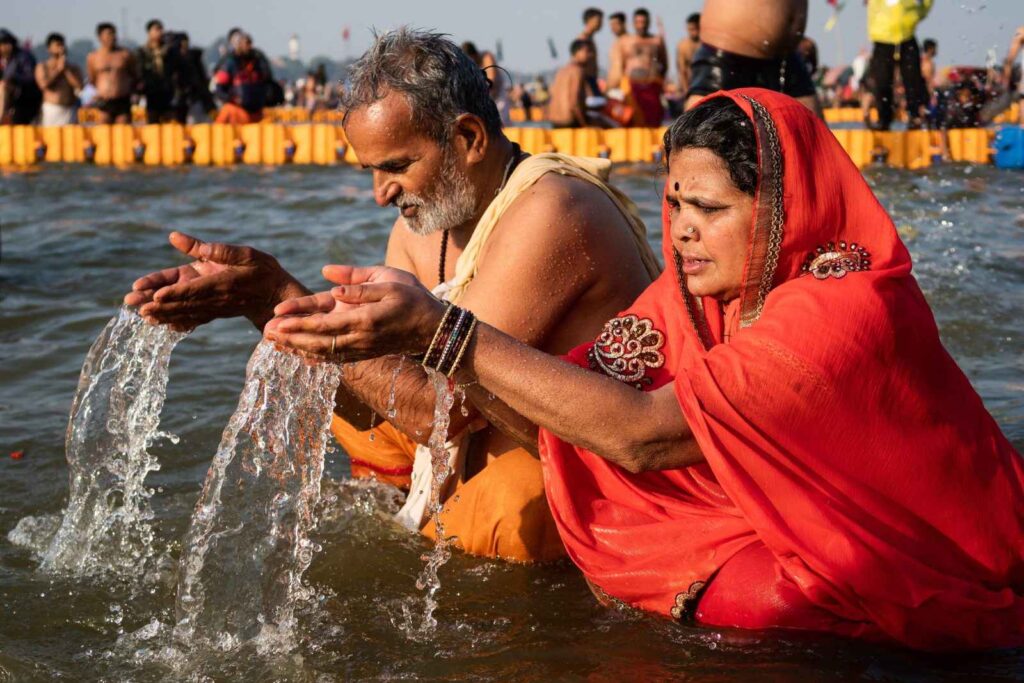
Kumbh Mela is a treasure trove of ancient rituals and customs, with the Shahi Snan (Royal Bath) being the most prominent. During the Shahi Snan, heads of various Akharas (sects of sages) and their followers take a dip in the holy rivers at sunrise, following a meticulously planned procession. This ritual is believed to purify the soul and wash away sins, providing spiritual rejuvenation.
Apart from the Shahi Snan, other significant practices include early morning prayers and chanting of mantras, lighting of holy lamps (Aarti), and participation in Ganga Aarti—a religious gathering where devotees sing hymns and release lit lamps into the river, creating a mesmerizing sight.
Pilgrims also undertake acts of charity and penance during the Kumbh, as the festival is seen as an opportune time for attaining divine blessings and performing good deeds.
Spiritual Leaders and Akharas
Akharas play a pivotal role in the Kumbh Mela, serving as the primary spiritual and organizational bodies. There are 13 main Akharas, each representing different sects of Hindu ascetics, including Nagas (naked monks), Udasin, Vaishnavas (followers of Vishnu), and Shaiva (followers of Shiva). These Akharas are led by prominent spiritual leaders known for their wisdom and ascetic practices.
The Akharas not only guided their followers in religious practices but also set up camps for discourse and preaching during the Mela. These camps become centers of spiritual learning, where devotees can attend lectures, discussions, and rituals led by revered sages and gurus.
The presence of these spiritual leaders and their followers adds a profound layer of serenity and spiritual fervor to the Kumbh Mela, making it an unparalleled experience of devotion and faith.
Cultural Extravaganza at Kumbh Mela
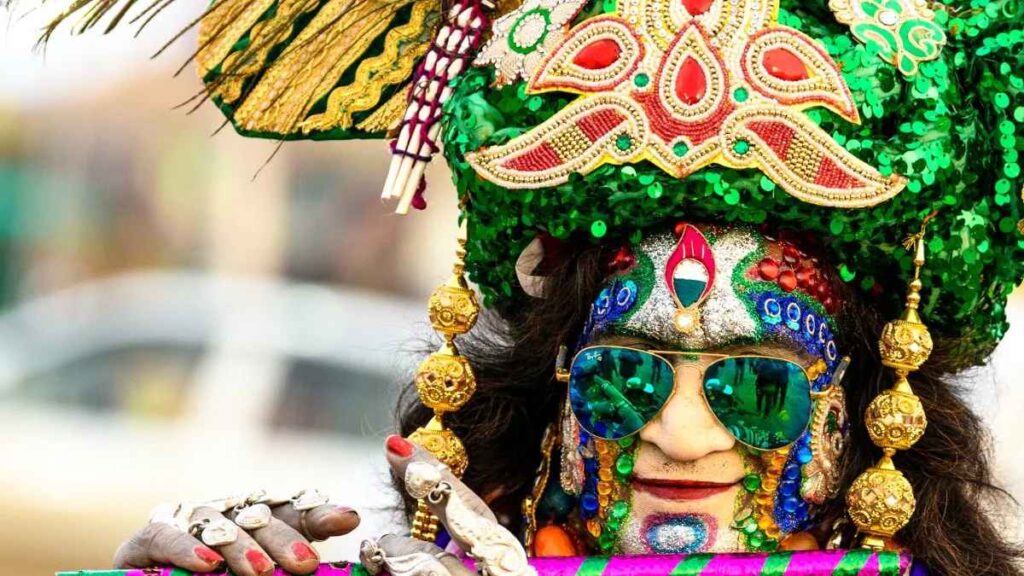
Art and Culture
The Kumbh Mela is a vibrant display of India’s rich cultural heritage. One of the highlights is the myriad of cultural programs that unfold throughout the festival. You’ll find folk performances from various regions, showcasing traditional music, dance, and theater. These performances often tell stories from Hindu mythology, bringing the ancient tales to life through Kathakali, Bharatnatyam and other classical dances.
Adding to the cultural splendor are the art displays, with intricate Rangoli patterns, clay sculptures, and handicrafts created by local artisans. The Mela also features exhibitions where art depicting religious themes and historical events is showcased, providing visitors an insight into India’s artistic legacy.
Cuisine
Food at Kumbh Mela is as diverse as the gathering itself. The bustling food stalls offer a culinary journey through India’s varied gastronomic landscape. Devotees and visitors can savor a range of traditional Indian dishes such as puri, sabzi, khichdi, and samosas. Sweets like jalebi, ladoo, and kheer are also abundant, adding a touch of festivity to the palate.
The Environmental Impact of Kumbh Mela
Cleanliness Initiatives
The Kumbh Mela sees millions of visitors, posing significant challenges to maintaining cleanliness. Yet, in recent years, remarkable efforts have been made to manage waste and keep the riverbanks pristine. Authorities and volunteers initiate comprehensive clean-up campaigns before, during, and after the event. You’ll find an impressive number of temporary toilets, waste bins, and recycling stations set up across the grounds.
Furthermore, innovative steps like promoting eco-friendly materials, banning plastic, and encouraging the use of biodegradable products have been introduced. The Swachh Kumbh Swachh Bharat campaign, aligned with the countrywide Swachh Bharat Abhiyan (Clean India Mission), plays a pivotal role in these efforts, ensuring pilgrims gain spiritual merit without harming the environment.
Environmental Concerns
Managing the environmental impact of such a massive gathering is no small feat. Among the significant concerns is the pollution of rivers due to rituals involving the immersion of offerings. To address this, authorities have implemented stricter guidelines on what can be immersed, along with awareness drives to educate people about eco-friendly practices.
The sheer size of the event also brings about challenges like air pollution from vehicular emissions and deforestation for temporary infrastructure. To mitigate these, initiatives like green transportation options (e.g., bicycles, electric vehicles) and the use of temporary, reusable structures have been encouraged.
Maha Kumbh Mela 2025
The Maha Kumbh Mela, set to take place in Prayagraj from January 13 to February 26, 2025, promises to be an extraordinary gathering of spiritual and cultural significance. As millions of pilgrims from across the globe prepare to converge, extensive arrangements are underway to ensure a seamless and enriching experience. The local government is spearheading efforts to construct temporary infrastructure, enhance sanitation facilities, and implement robust security measures to accommodate the massive influx of visitors.
A Journey Beyond Religion
Attending the Maha Kumbh Mela is much more than a religious pilgrimage—it is an unparalleled cultural experience. The event’s magnitude, coupled with the fervent devotion of attendees, fosters an atmosphere of reverence and unity. Visitors have the opportunity to witness ancient rituals, interact with ascetics, and engage in communal activities that celebrate the rich heritage of Indian spirituality and culture.
Essential Tips for Attendees
For those planning to participate in the 2025 Maha Kumbh Mela, here are some practical considerations:
- Accommodation: Choices range from budget-friendly tents to premium lodging. Given the high demand, early reservations are highly recommended.
- Health and Safety: Stay updated on vaccinations, carry essential medications, and prioritize hygiene to ensure a healthy experience.
- Cultural Etiquette: Respect local traditions by dressing modestly and behaving courteously. Familiarizing yourself with basic customs can enhance your interactions and overall experience.
The Maha Kumbh Mela is not just an event—it is a profound journey that leaves an indelible mark on the hearts of all who attend.
Conclusion
The Kumbh Mela stands as a testament to the enduring power of faith and the collective human spirit. It is a celebration that transcends religious boundaries, offering a unique glimpse into the soul of India. Whether you seek spiritual solace, cultural enrichment, or simply an unparalleled experience, the Kumbh Mela beckons with open arms.
FAQ’s
Q. What is Kumbh Mela?
A: Kumbh Mela is the world’s largest religious gathering, celebrated in four sacred cities of India—Prayagraj, Haridwar, Nashik, and Ujjain. It is a spiritual festival rooted in Hindu mythology, attracting millions of devotees seeking purification and salvation.
Q. Why is Kumbh Mela significant?
A: Kumbh Mela holds immense spiritual significance as it is believed that taking a holy dip in the sacred rivers during the festival cleanses one of the sins and leads to liberation. It also serves as a cultural and spiritual hub, showcasing India’s rich traditions.
Q. What is the origin of Kumbh Mela?
A: Kumbh Mela originates from the Hindu mythological tale of Samudra Manthan (churning of the ocean of milk), where drops of the nectar of immortality (Amrit) fell at four locations, sanctifying them.
Q. How is the timing of Kumbh Mela determined?
A: The festival’s timing is based on specific astrological alignments of the Sun, Moon, and Jupiter, which are believed to enhance the spiritual potency of the rivers.


